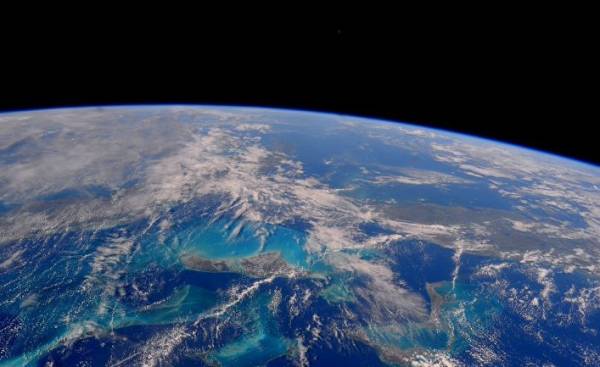
The first exoplanet was discovered in 1988. After this was discovered over 3 thousand planets outside our solar system, and it can be assumed that about 20% of Sun-like stars have Earth-like planets in habitable zones. While we do not know whether any of these planets life — and we don’t know how to emerging life. But even if life where something was born, will it survive?
The earth has experienced in its history, at least five periods of mass extinction. Has long been accepted that the impact of asteroids dinosaurs. We as the human race rightly show concern about those events that can lead to our own destruction — that is, climate change, nuclear war or disease is able to wipe us off the face of the earth. So quite naturally the question arises — and what you need to do in order to wipe out all life on any planet?
For this you need to establish some kind of benchmark, and we began to study the species, which is considered the most hardy of animals (tardigrade), which is also called “water bears” because of their appearance. Based on our recent studies, we can say that these microscopic eight-legged creatures or their equivalents will be very difficult to destroy by any similar to our planet. The only thing able to destroy them astrophysical catastrophe is so unlikely that her chances can simply be taken into account. Such exceptional survival ability of adds weight to the idea that life is tenacious and that can be found on other, less hospitable planets than our own.
The last survivors
Tardigrades are known for their ability to survive in incredible conditions. If the temperature will fall to minus 272 degrees Celsius or rise to 150 degrees Celsius, with them, nothing will happen. If you increase the atmospheric pressure more than a thousand times than the surface of the Earth, or to downgrade to the vacuum of space, they will survive. Tardigrades are able for almost 30 years without food and water. They can withstand radiation in the thousands of gray (the standard dose) then dose ten gray is fatal for most people.
Tardigrades live all over this planet, but they can also exist in deep water, in volcanic craters at the bottom of the Mariinsky basin and they are absolutely not concerned about such things as life and death live on the surface of mammals. The result of the disappearance of the ozone layer or the upper part of the atmosphere people will be exposed to deadly radiation, while water will carry out a protective function.
We wanted to understand what disasters are, ultimately, able to destroy those of animals. What needs to happen so that they ceased to exist on our planet? Here’s the simple answer: all the oceans of our planet needs to boil. On Earth, this would require an incredible amount of energy and 5.6×1026 joules (with current overall level of production would require about a million years). Therefore, we must consider astrophysical events that could provide a similar amount of energy.
There are three main candidate able to do the asteroids, supernova, and the blast of gamma radiation. The earth throughout its history was exposed to asteroids. However, in our solar system there are only 17 candidates for this role (including dwarf planets like Pluto and Eris), since they must be large enough to ensure formation of the necessary amount of energy. However, their orbits do not intersect with the orbit of the Earth.
If we analyze the consequences of collision of Earth with asteroids, we can extrapolate the level at which such events on the type of judgement day can happen. It turns out that something similar happened about once in 1017 years — and it’s more than the lifetime of the universe. Therefore, the probability of this happening is very low.
At birth supernova (massive star explosion) is allocated a colossal amount of energy — 1044 joules — more than enough to bring to the boiling point of the water in our oceans. Fortunately, the resulting level of energy decreases rapidly as the distance of the object from a supernova. That is, in the case of the Earth for sterilization need to supernova appeared at a distance of about 0,013 light years. If you don’t count the Sun, the nearest star Proxima Centauri (Proxima Centauri) is at a distance of 4.25 light-years (and it is not suitable for the formation of a supernova).
For such planets like Earth in our galaxy the distance between stars depends on their distance from the galactic center. Its Central bulge (central bulge) has more objects than that part which is closer to us. But even at a close distance, considering the frequency of occurrence of supernovae, sterilization is unlikely to occur more than once every 1015 years, and this is again much higher than the age of the universe.
And finally, there are gamma-ray bursts, mysterious explosions, which generated a huge amount of energy focused in a very thin beams of radiation. Analyzing these explosions as we did in the case of supernovas, we found that they are able to destroy life on planets such as the Earth only if their source is to be no more than 42 light-years, but the planet itself will be in the path of movement of the beam. And again it turns out that the frequency of such events is quite low, so a very small number of planets can be sterilized in the flash of gamma radiation.
The Apocalypse will not be
Taking into account the negligible probability of such apocalyptic events, we come to the conclusion that tardigrades will exist until the explosion of the Sun, and this will happen in about a billion years. There is one last and extremely unlikely possibility — some star to push from the orbit of some planet. But in this case, volcanic craters, where they live, some tardigrades can produce heat until, until it will capture another star.
There are many events both external and local, which can lead to the extinction of the human race. However life in General is incredibly tenacious. Starting the search for life beyond Earth, we may make the following assumption: if at some planet for life to evolve, some of its elements are still there.







